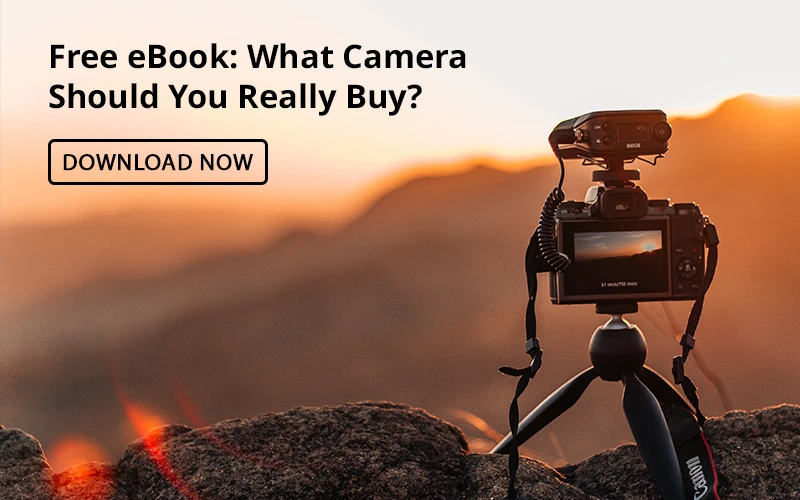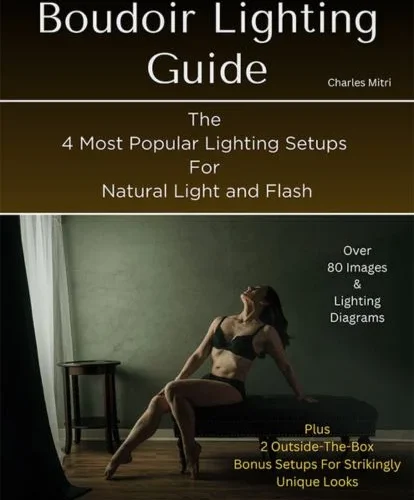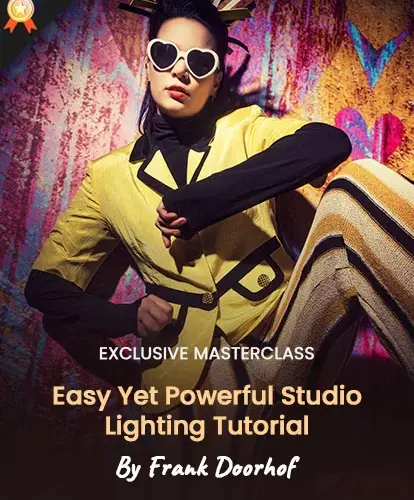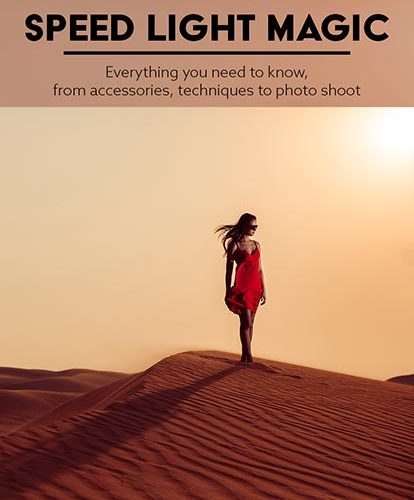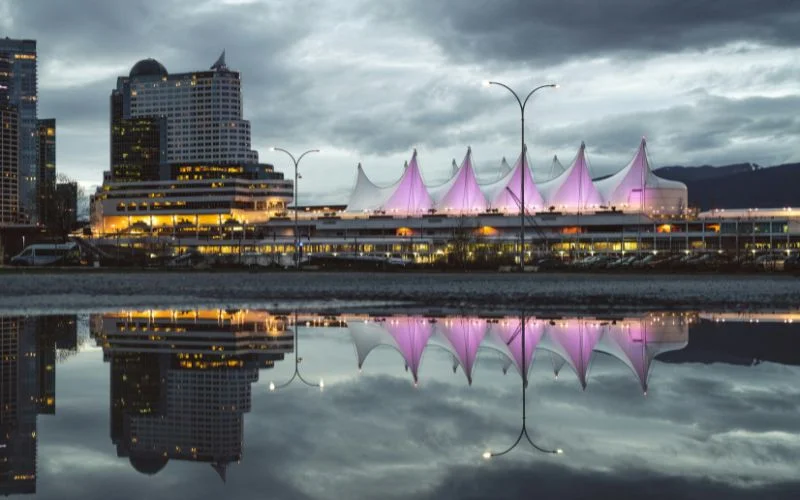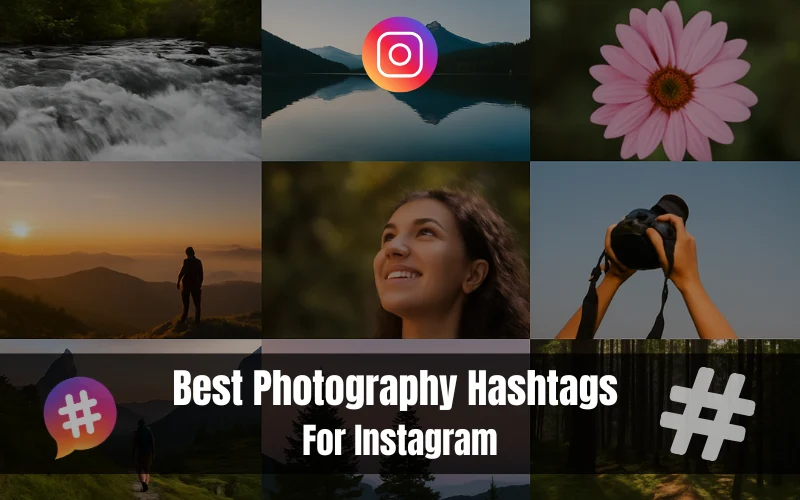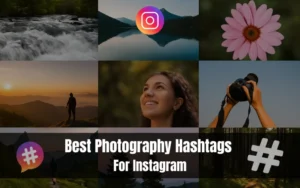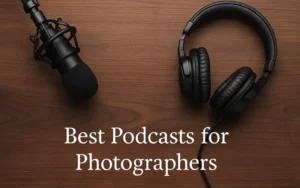After-dark photography could be considered the most magical and enchanting genre in photography. When darkness falls, photographers create or capture spectacular images.
This article examines this mesmerising type of photography. It will enlighten you about the discipline of after-dark photography and reveal its categories.
Table of contents
Rundown of After-Dark Photography
After-dark photography is the process of taking photos after dark using slow shutter speeds. The use of slow shutter speeds results in a long exposure. The shutter speed is key and the foundation of after-dark photography.
When shooting after dark, a long exposure allows you to open up the camera shutter for a long time to create spectacular photos.
The principle is always the same regardless of the photo you want to capture or create. Take a long exposure with your camera after dark with a light source. The beauty of this type of photography is that the possibilities are endless.
I shoot all types of photography, but after-dark photography is my favorite. It is the most exciting because it lets my creativity run wild.
The genre of after-dark photography is very broad as it relates to all photos taken at night. Nevertheless, they all have three factors in common: a light source is present, a long exposure is taken, and the photo is captured in low-light conditions.
This article describes six common categories found within after-dark photography: light painting photography, light trail photography, steel wool photography, outlining photography, trajectory photography, and star trail photography.
Also read: How to Shoot on Location: A Lighting Tutorial from The Slanted Lens.
Light Painting Photography
Light painting is a technique in photography in which a light source is used to paint a photo. Some call it light graffiti or light drawing, but it is widely known as light painting.
Photographers use their chosen light source to paint different shapes, patterns, and strokes to create different images. This is made possible by taking a long-exposure photo in low-light environments, which lets the light painter draw something by moving a light source at the camera.
Typical light sources used in light paint photography are torches, sparklers, light painting tubes, brushes, string lights and glow sticks. The principle is always the same regardless of the light source. Once the camera starts taking the photo, you turn on the light source and move it around.
This is a simplified explanation, but there is some logic behind it. A light painter will have an idea they are trying to execute in their creation. This idea can be something geometric, like a circle, orb, or abstract.
Light painting night photography is regarded as an art form. It is an activity and a means of imaginative and creative expression. Light painters are in complete creative control because they determine the outcome of the image. You can find a diverse light painting community online and across social media. Light painting photographers have their style and create many spectacular images with it.
In a nutshell, light painting photography is all about manipulation. It combines a long exposure with light sources to produce a creative photo.
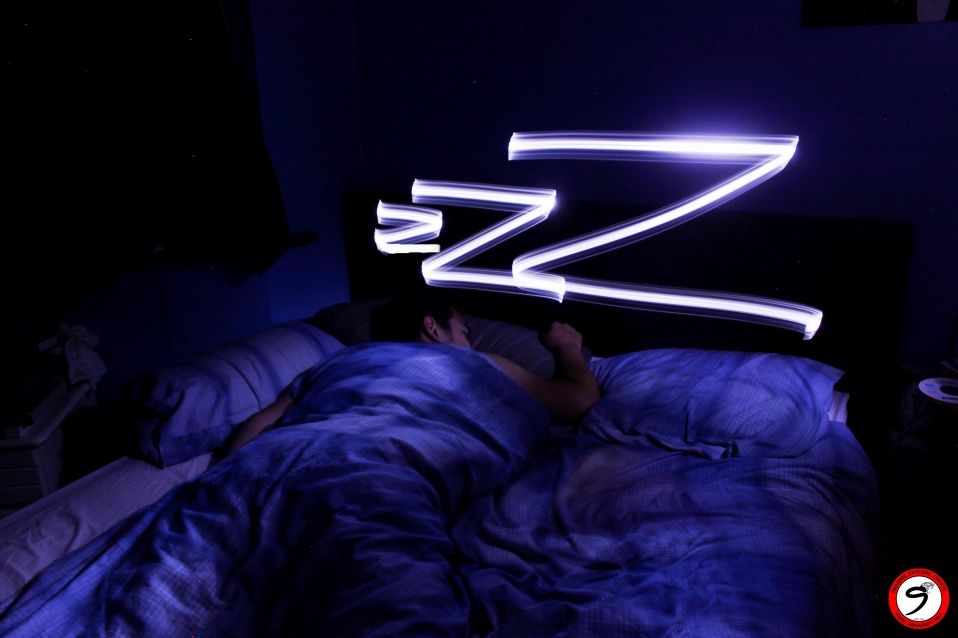
Light Trail Photography
Taking a long exposure photo where vehicles are driving past the camera results in capturing an image that shows the movement by its lights. Any vehicle can be used to create a light trail photo. The only requirement is that it needs to have lights on it.
Some popular examples are cars, trucks, buses and trains. The camera captures a photo that lasts several seconds, causing every passing vehicle to create light trails on the path taken.
When a light trail photo of a vehicle is taken, it appears as a streaked moving line that travels across the image over a visible distance. The night light trail photography genre is exceptionally beautiful and enchanting. There is something special about the patterned trails that are created, which make them greatly pleasing to the eye.
As a photographer, this type of photo is a great way to show off your camera skills. Interestingly, to others, the photo may seem to have been created intricately, but it was simple to take as the moving vehicle did all the work for you!
Also read: Brilliant Way to Use Window Light as Your Overhead Light Source
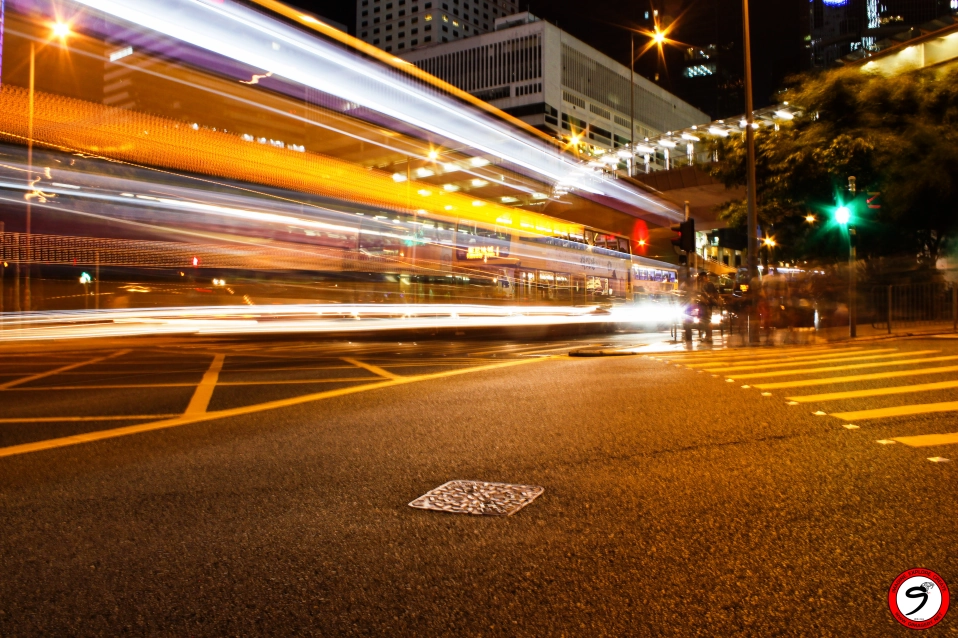
Steel Wool Photography
Steel wool or wire wool spinning photography involves long exposures to capture the motion of hot embers flying through the air. It is achieved by setting fire to a material called steel wool sitting inside a metal whisk attached to a chain and then spinning it.
Once alight and spun around in the air, the glowing hot embers of steel wool fly out and create orange/gold streaks of light captured by the camera. The effect is somewhat similar to that created by a Catherine Wheel firework.
This technique produces eye-catching images and is also an interesting experience. However, it is also very dangerous. Safety precautions are extremely important in steel wool photography and must be taken seriously. If you are not careful, property can be damaged, and people can be injured.
Nevertheless, wool-spinning photography is truly spectacular. Its beauty is that no photo looks the same, and it allows experimentation to create unique photos.
Also check out The Ultimate Steel Wool Photography Guide

Outlining Photography
Outlining photography is one of two styles discussed in this article that I invented. I have not seen any photographer do it. I define outlining photography as when a line or set of lines are drawn to mark out and show an object’s border or outer shape.
An outlining photo is created using a torch or sparkler to outline the object while taking a long exposure photo. A torch or sparkler can create the effect and display the outline.
I love this type of photography. There is something magical about displaying the outer shape of a static object, and it becomes even more magical when I can imagine it moving. Such photos leave the viewer in awe of their beauty and wondering how they were created.
Also read: Uber-Cool Hacked Lighting Setup for Headshots
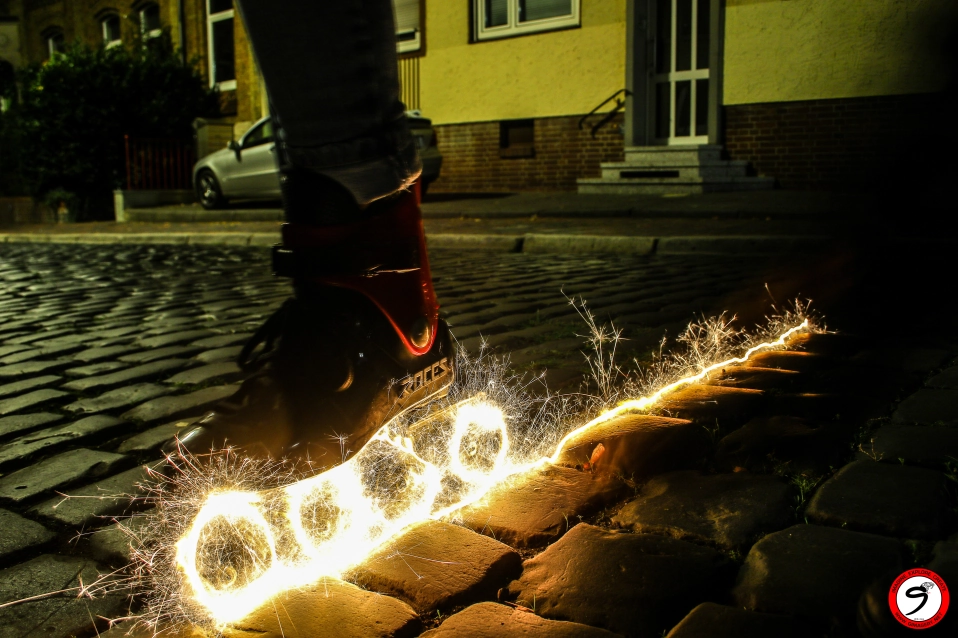
Trajectory Photography
This is the second style of photography discussed in this article that I created. Along with outlining photography, I did this myself and have not seen anyone doing it. I define trajectory photography as taking photos where the path of a moving object is displayed in an image.
A sparkler attached to the object makes the line or curve resembling the path the object took visible. The object is thrown/hit/struck/kicked/rolled while a long-exposure photo is taken. The sparkler attached to the object, coupled with the action taken to move it, enables the camera to capture the movement made by the object and show how it traveled.
The trajectory photo type is one of the most impressive, breathtaking, and creative in after-dark photography. Undertaking a trajectory photo produces a striking image with a wow factor. Such photos are very unusual, which makes them interesting for any viewer to look at.
Also read: How to Achieve Spectacular Lighting for Product Shoots
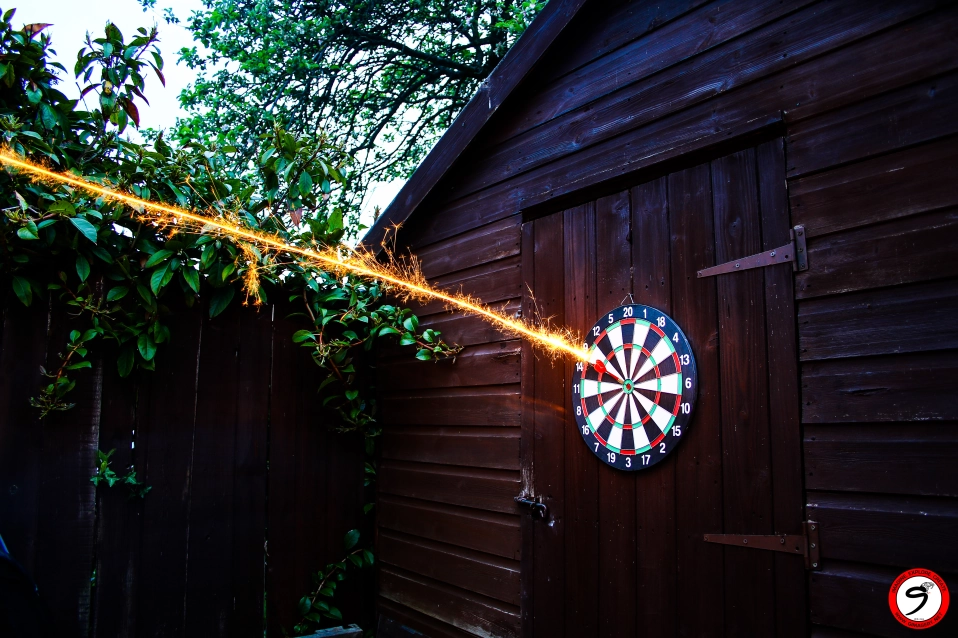
Star Trail Photography
Star trail photography involves taking long exposures to show the motion of the stars in the night sky. The long exposures create an image of the earth turning on its axis and the stars moving above. A star trail photo shows all individual stars in the sky as streaks.
The duration to create one image can range from minutes to several hours. Shorter durations create stair trails shown as curves, and longer durations create stair trails that are shown as full circles.
The following is a summary of the process as it is rather technical. If the aim is to create a full circle star trail photo, you must point your camera to the North or South Pole. This is dependent on which hemisphere you are in.
You would then take long-exposure photos continuously for 2 to 4 hours. Then, software is needed to complete the process. Once your photos are taken, you use software such as StarStaX to stack them on top of each other to create the photo.
If you aim to create a star trail photo with just curves, you will do the same as previously stated, with some differences. First, where in the sky you point the camera to is not too important. Second, you would take long exposure photos continuously for minutes and not hours.
This type of photography is fascinating, and the images produced are out of this world. However, although you will create amazing photos in this genre, it can be time-consuming.
Also, check out How Big Is A 4×6 Photo
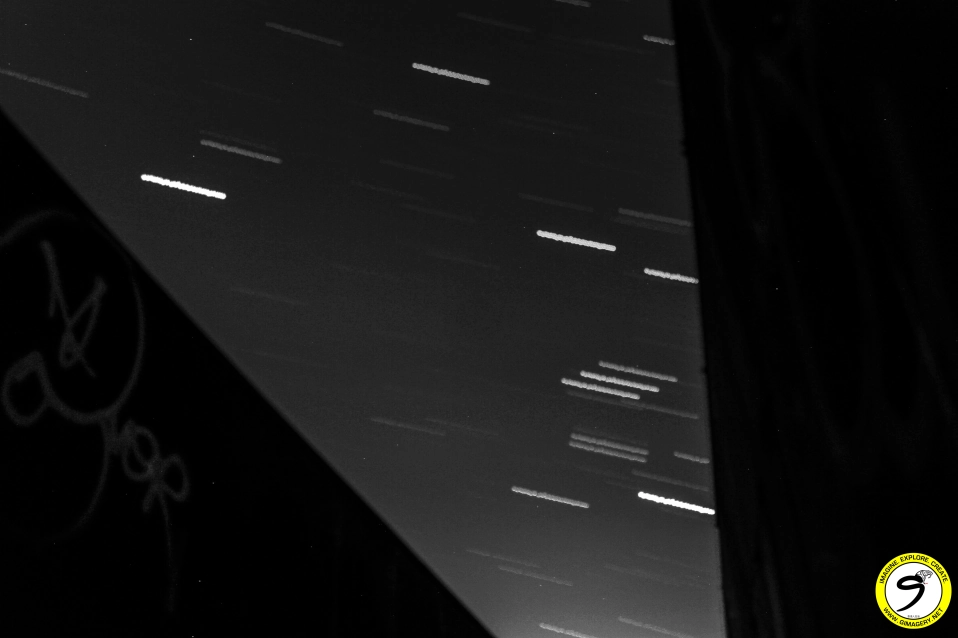
Conclusion
As you can see, the after-dark photography genre is very diverse. In this article, we described the six most common categories found within after-dark photography, but there are more. Having read this article, we may concur on one thing.
This is why after-dark photography is up there as one of the most magical and enchanting genres of photography!
If you are inspired to continue your journey in this discipline, PhotoWhoa offers a range of masterclasses in this field. Also, we have a masterclass on light painting photography, along with the subjects of steel wool and long exposure. You can take these masterclasses HERE.

If you are interested in the discipline of long exposure photography, an e-book that may interest you is ‘A Beginner’s Guide To After Dark Photography with Gimagery’, which you can get exclusively on PhotoWhoa here.
This is a comprehensive guide to the discipline and everything you need to know to master it. Moreover, if you prefer physical copies of books, you can get them here.
Like this post? Check out more amazing photography content here. Also check out: 80 Dark LUTs Presets

